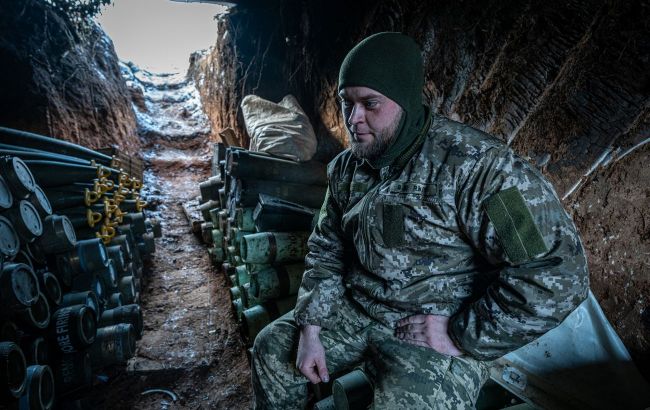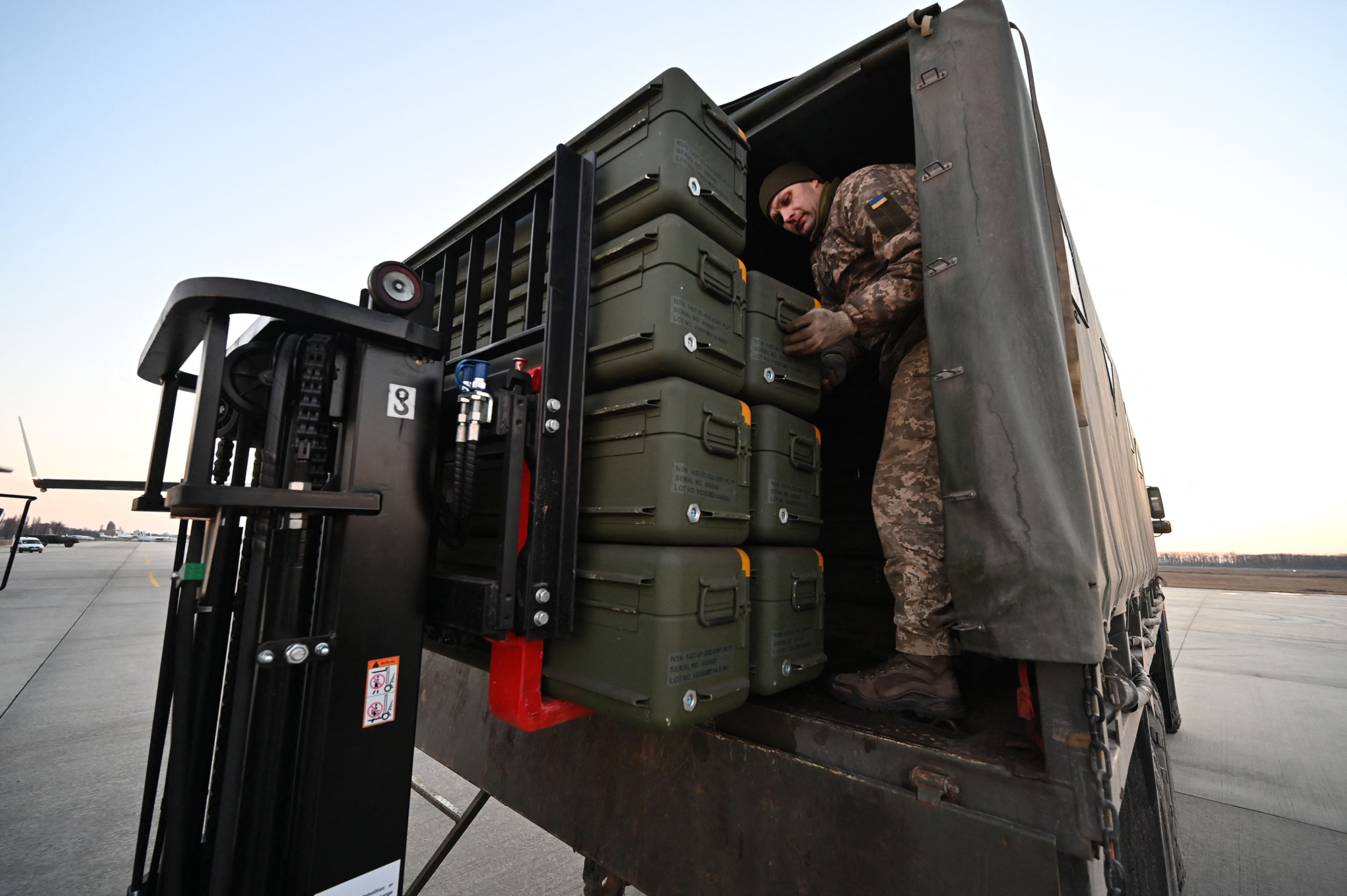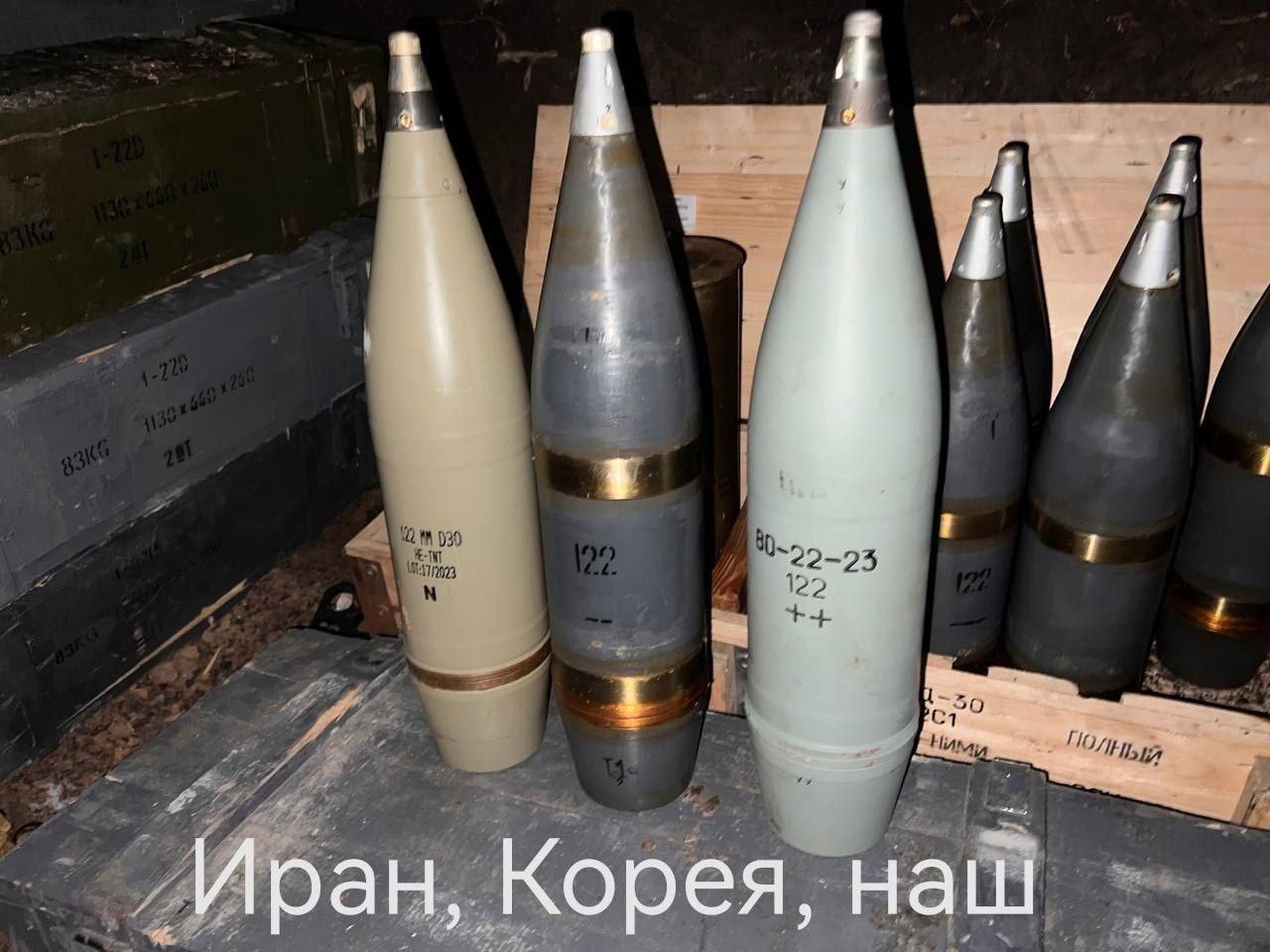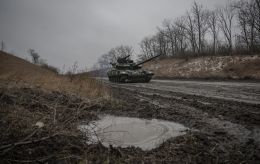Shell hunger: Ukraine's options for ammo sourcing and West's ability to bypass Russia
 Ukraine needs assistance from the United States and the European Union with munitions to achieve parity with the Russian Federation (Photo: GettyImages)
Ukraine needs assistance from the United States and the European Union with munitions to achieve parity with the Russian Federation (Photo: GettyImages)
Europe promises to deliver one million artillery shells to Ukraine by spring, but doubts about the plan have been expressed by EU members since the fall. Nonetheless, one million munitions are far from meeting the full need to achieve parity with the Russians. The West's capabilities to compete in munitions production with Russia are explored by RBC-Ukraine.
Sources for this article include materials from Defense Express, statements from EU officials, Ukraine's Ministry of Strategic Industries, the General Staff of the Ministry of Defense of Ukraine, information from sources in Ukrainian intelligence services on the condition of anonymity, and comments from experts Ivan Kyrychevskyi and Oleksandr Kovalenko.
This winter, the Ukrainian army faced a noticeable shortage of ammunition. If in the summer of 2023, at the beginning of the Ukrainian Armed Forces' offensive operation, they could fire up to 7,500 rounds per day against the Russians' 5,000, according to the Royal United Services Institute (RUSI), this ratio has now changed unfavorably. Ukrainian military now fires approximately 2,000 rounds daily, while the occupying forces fire five times more.
Ukraine is extremely dependent on Western partners for the supply of ammunition. Over the past two years, both Kyiv and its allies have collected ammunition from all possible sources suitable for Soviet-era artillery. However, many Western systems that began appearing on the battlefield in mid-2022 require ammunition of a NATO caliber, which Ukraine has never produced before. The countries that did produce such ammunition were not prepared for such an intensive artillery war or such high demand.
For decades, the West placed small defense orders for artillery shells, relying on NATO doctrine that did not anticipate such emphasis on artillery in future military conflicts. Their focus was on bombs and aviation means of attack. NATO assumed that strike aviation would be a substitute for artillery, explains Ivan Kyrychevskyi, an Expert at the Defense Express Media and Consulting Company. Bureaucracy and internal political processes in both Europe and the USA further complicate these factors.
Europe is stepping in to help
The government reports that Ukraine not only manufactures but also expands the range of artillery ammunition production. According to open data, the Ukrainian defense industry now produces 122mm and 152mm shells, as well as 220mm rocket shells with fragmentation-fragmentation warheads. Minister for Strategic Industries Oleksandr Kamyshin has announced that this year, serial production of 155mm NATO caliber shells will also begin. However, it still will not be enough to meet the front's needs.
One of the key obstacles to scaling up production is the significant dependence on foreign components and a shortage of explosives, particularly powder. This problem is typical for the entire Western world. Launching and fully operating powder plants in Ukraine is dangerous due to the threat of Russian shelling.
Secondly, even in peacetime, setting up a shell production industry takes time, at least 1-2 years, assumes Kyrychevskyi. Therefore, Ukraine needs equivalent supplies of ammunition from abroad for this period.
In early 2023, the European Union promised to provide Ukraine with one million artillery shells within 12 months, by March 2024. The supply was expected to come from existing stocks as well as through orders to their own enterprises.
 The EU aims to fulfill its commitment to supply Ukraine with the promised million shells (Photo: GettyImages)
The EU aims to fulfill its commitment to supply Ukraine with the promised million shells (Photo: GettyImages)
According to Bloomberg, Ukraine has received only 30% of the planned volume in 7 months, approximately 300,000 munitions, supplied as part of the first phase when shells were directly sourced from EU member states' arsenals.
In the fall, some EU officials began publicly acknowledging the risk of not fulfilling their commitments to Ukraine. Some countries, as reported by Bloomberg in October, approached the EU's foreign policy department to request an extension of the artillery shell supply deadlines.
According to Estonia's defense department estimates as of February 2023, Europe's maximum capacity was 300,000 artillery shells per year. Meanwhile, one of the major munitions producers, the Norwegian company Nammo, reported in the fall that Europe could manufacture up to 500,000 shells. The industry plans to reach the one million mark only in 2024, according to Ursula von der Leyen, President of the European Commission.
Not all shells produced in Europe can be directed to Ukraine. A portion remains within the EU for replenishing their own stockpiles. Approximately 40%, according to the EU's High Representative for Foreign Affairs and Security Policy, Josep Borrell, goes to other customers according to existing contracts. Failure to fulfill these contracts entails penalties and reputational damage to defense companies.
Obstacles to rapid production scaling include supply chain issues, high raw material prices, and a shortage of skilled workers. Thus, while Europe's industry is genuinely working on increasing production, these efforts are insufficient to meet the needs of Ukraine, Europe, and other non-bloc buyers. Additional political contradictions within the EU compound the situation, according to Kyrychevskyi.
"It's a strange story where almost every Western country separately supplies shells, but they can't pool resources as part of a unified program. Although the EU leadership conceived this project to consolidate efforts, not to disperse them," says the expert.
Earlier this month, the lead spokesperson for Foreign Affairs and Security Policy of the EU, Peter Stano, announced that by the end of December 2023, Ukraine had received over 300,000 munitions, with an additional 180,000 shells in the process of production and delivery. The goal is to transfer another 700,000 in the next two months, expected to come from production.
Recent statements from EU officials appear more optimistic. European Commissioner for the Internal Market Thierry Breton expressed confidence in January that the bloc could fulfill its commitments to Ukraine by spring. He suggested achieving this by reducing exports to non-EU countries. The spokesperson for the European Commission's defense industry, Johanna Bernsel, also recently stated that the European industry already has production capacities that "significantly exceed a million artillery shells." Therefore, according to her, the bloc will be able to produce one million shells for Ukraine by spring.
"There was a discussion in the EU about the option of buying shells from Türkiye to fulfill commitments to Ukraine. Türkiye is a major producer of 155mm shells. However, France and Greece opposed this, stating that countries outside the EU should not be involved in this project. Industrial protectionism at work, but no munitions," explains Kyrychevskyi.
Perhaps the approaching conditional deadline will eventually force the EU to reconsider this position and purchase some munitions from countries outside the bloc. However, as of today, the situation looks like Ukraine is unlikely to receive the promised shells by March, unless with a delay of several months.
The Ministry of Defense's press service informed the news agency that during the opening of the Artillery Coalition in Paris on January 18, representatives of 22 participating countries consolidated their position on meeting the needs of the Ukrainian Armed Forces in specific artillery weapons.
"During the meetings of the Defense Contact Group in the Ramstein format, defense ministers of partner states expressed assurance of support for Ukraine for as long as necessary, particularly continuing the provision of artillery munitions. At the same time, some donor states emphasized non-disclosure of information regarding the military assistance they supply in open sources," the Ministry of Defense said, responding to questions about Ukraine's need for artillery shells and expectations of Western assistance.
The West against Russia and its terrorist outsourcing
The main donor of munitions for the Armed Forces of Ukraine remains the United States. Since the beginning of the major war, Washington has supplied over 2 million 155mm artillery munitions to Kyiv, mostly from stockpiles. In terms of production volume, the United States slightly lags behind the EU.
 The United States is rapidly increasing its production of 155mm munitions (Photo: US Department of Defense)
The United States is rapidly increasing its production of 155mm munitions (Photo: US Department of Defense)
At the onset of the Russian invasion, the U.S. was manufacturing 14-15 thousand 155mm shells per month, totaling 180 thousand annually. However, by September, they reached a monthly output of 28 thousand, surpassing the initial target of 24 thousand by the end of 2023. The U.S. plans to further increase production to 60 thousand per month in 2024, 80 thousand in 2025, and 100 thousand in 2026. There is a possibility that the U.S. might achieve these targets earlier than planned.
One of the problems for the United States is that their vertical production of ammunition is scattered across various plants, notes Kyrychevskyi. In other words, one shell is assembled in different complexes, which elongates the production cycle by weeks solely due to logistics. The expert suggests that the facilities may not have time to reorganize their work currently, so they can only increase productivity in specific stages. And apparently, they are succeeding in doing so.
However, the active supplies from the U.S. are currently slowing down due to conflicts between Republican and Democratic camps. The Pentagon cannot transfer ammunition because Congress is still debating funding for aid to Ukraine. Part of the allocated funds is supposed to go towards replacing armaments and ammunition from U.S. military stocks. Therefore, all these factors combined have led to Ukraine currently facing a serious shortage of ammunition on the battlefield. However, Russia's situation is far from smooth as well.
Russia inherited significant production capacities and ammunition reserves from the Soviet Union. In the fall, Estonian intelligence reported that Moscow had 4 million artillery shells in its arsenal. Meanwhile, the Ukrainian Defense Intelligence suggests that Russian defense is currently capable of supplying around 2 million large-caliber shells - 122mm and 152mm - per year. However, it is unclear whether this figure includes the quantity of refurbished ammunition.
In the spring, Russian experts estimated that with maximum capacity utilization, all their plants could produce only 900,000 artillery shells in 122mm and 152mm caliber per year. The rest can be supplied only through the restoration of old shells.
Two million ammunition per year allows the adversary to provide up to 5,500 shots per day. In other words, their production does not cover the needs of occupation forces on the front.
"Their technological capabilities are limited. To do this, they need to open new production lines, new machines. But all their capacities have remained since Soviet times, and due to sanctions, they cannot acquire modern equipment. In addition, Russia lacks powder production. For example, they get cotton cellulose from Kazakhstan and Uzbekistan, which is used to produce explosives - powders. Russia also tries to obtain powders from China," explains military and political expert of the Information Resistance Group Oleksandr Kovalenko.
The Kremlin is also trying to compensate for the shortage of ready-made shells through external supplies. Initially, Moscow exported almost all shells from Belarus. Then it tried to import them from Iran, and now it has reached an agreement with North Korea.
According to the Ukrainian Defense Intelligence, the most active supplies of ammunition from North Korea took place in September, October, and November. The volume of 122mm and 152mm artillery shells sent by Pyongyang to Russia could reach a million. This largely explains how the adversary managed to increase the intensity of shelling compared to the summer of 2023.
Ukrainian analysts suggest that the quantity of a million may be overstated. According to Kovalenko, there was information about Russia receiving thousands of containers from North Korea with various items, including confirmation from U.S. intelligence.
"A thousand containers of 152 calibers is approximately 200-300 thousand shots. If we are talking about other calibers, for example, 122mm, there may be more. If we are talking about 122mm rocket shells, then much less. If Russia had sent exactly a million shells, then it would be conducting shelling of a completely different intensity," Kovalenko speculates.
Sources in the intelligence agencies say that, unlike North Korea, Iran generally supplied Russia with no more than 250 thousand shells. Currently, there are no active deliveries of shells from Tehran.
Estimating even approximate production volumes of shells in North Korea is very difficult. North Korea has not been involved in hostilities for decades, so all manufactured ammunition went to storage.
"Moreover, North Korea also has poor resources. Their situation for shell production is hardly more favorable than ours. They need energy resources from the northern neighbor to produce these shells. So I can assume that the Russians simply provide North Korea with the necessary raw materials for ammunition production at their facilities - a kind of terrorist outsourcing," explains Kyrychevskyi.
Additionally, from photos published by the Russians on social media, one can conclude that the shells supplied by North Korea are of questionable quality. Rust is visible in some places. Accordingly, they were stored either for too long or in very poor conditions. They have lower accuracy and range than ammunition from the Russian defense industry.
 In Russian social networks, complaints about the quality of projectiles from North Korea are being voiced (Photo: from Russian war-related public)
In Russian social networks, complaints about the quality of projectiles from North Korea are being voiced (Photo: from Russian war-related public)
"They have different types of powders, they do not comply with the requirements of quality production and storage of these projectiles. If we talk about 152 caliber ammunition, they turn out to be either 152.2 mm or 152.4 mm. That is, a projectile from the same batch may have such deviations. All of this, in turn, affects the quality of shots, increases the risk of barrel ruptures, or the failure of the projectile itself," says Kovalenko.
It turns out that the entire military-industrial complex of the United States and the EU combined may produce fewer than a million large-caliber artillery shells per year in contrast to Russia's 2 million. However, unlike Moscow, the West has been actively increasing its capacities in recent years and retains the potential for further scaling.
"While in Russia, there are no possibilities for such growth. Since 2022, it has not increased it several times from its overall capacities. It increased this production in accordance with their capacities. Their capacities were 1.7 million even after the collapse of the Union; they just did not produce such a quantity of shells every year. They produced 600-650 thousand, but the limit is 1.7 million. Whereas in Western countries, there is no such maximum limit - they can continue to increase," believes Kovalenko.
***
The NATO shells that Europe promises to supply by spring are only a partial need for Ukraine. One million ammunition per year is about 2,800 per day. Whereas for parity with the Russians, at least 10 thousand per day or 3.6 million ammunition per year is needed.
However, the artillery of NATO caliber in the Ukrainian Defense Forces may constitute 2/4 or 1/3, Kyrychevskyi suggests. This means that the shortage of NATO ammunition can be diversified by using Soviet shells from Eastern European countries. In particular, from Bulgaria, where such ammunition is now being produced in several shifts, the interlocutor clarifies. Although he acknowledges that for Ukraine, this is not a solution but just a better of the worse options.
Another solution could be to compensate for the shortage of artillery fire by expanding the production of FPV drones. As of December, Ukraine had already produced over 50 thousand such UAVs. For the entire year 2024, the government aims to purchase a million of these drones from the Ukrainian industry.

